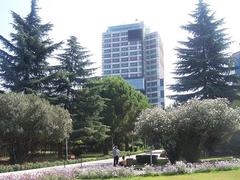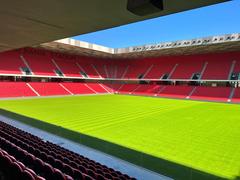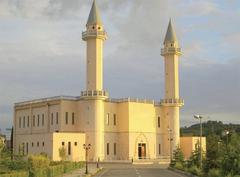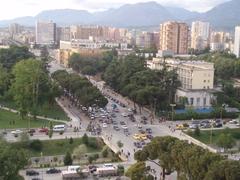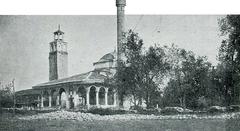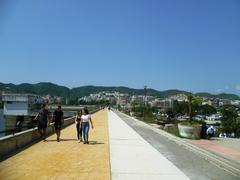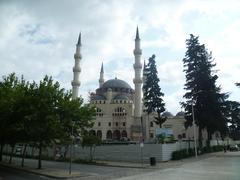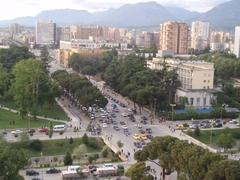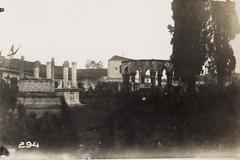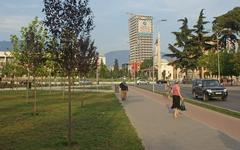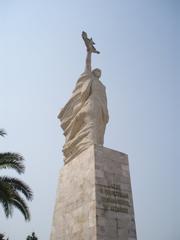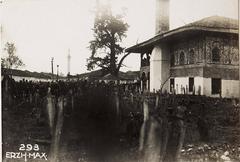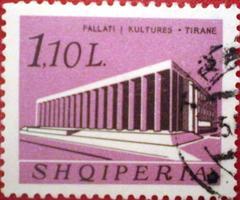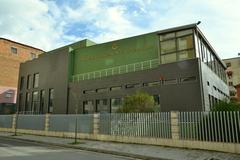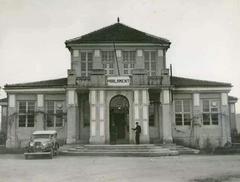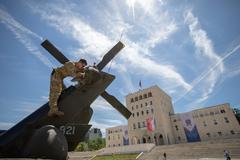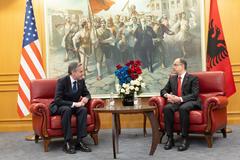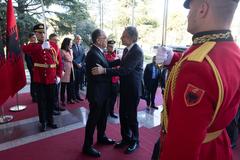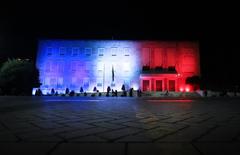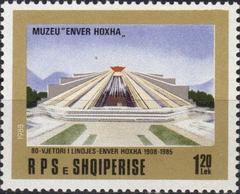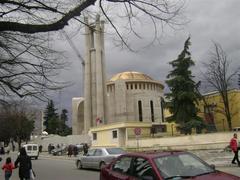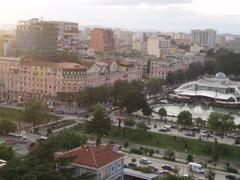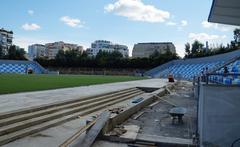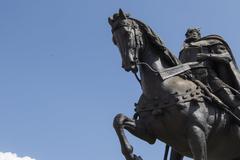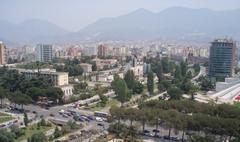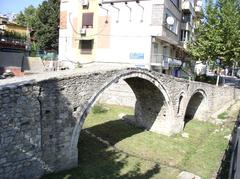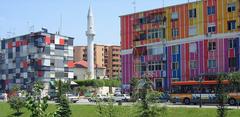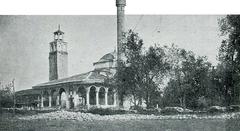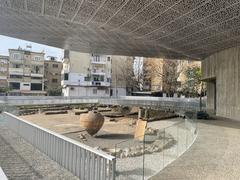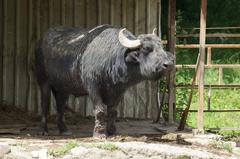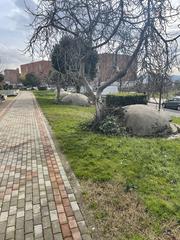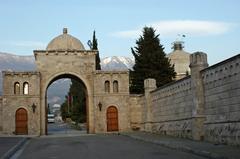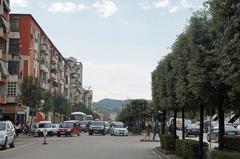Kokonozi Mosque Tirana: Visiting Hours, Tickets, and In-Depth Travel Guide
Date: 14/06/2025
Introduction
The Kokonozi Mosque, nestled in the energetic Pazari i Ri (New Bazaar) district of Tirana, stands as a living testament to Albania’s Ottoman legacy and its enduring religious traditions. Built in 1750 by Mahmud Agha Kokonozi, this mosque reflects the architectural and cultural influences of the Ottoman Empire that shaped Tirana’s urban landscape in the 18th century. Unlike the grand imperial mosques of Istanbul, Kokonozi Mosque was constructed as a neighborhood place of worship—elegant in its simplicity, featuring a single dome, slender minaret, and tranquil prayer hall. Its survival through Albania’s tumultuous 20th-century history, particularly during the communist era, sets it apart as a symbol of resilience and cultural continuity (visitsights.com; archiqoo.com).
This comprehensive guide offers everything you need to know about visiting the Kokonozi Mosque: its historical context, architectural highlights, cultural significance, practical visitor details, and tips for a respectful and memorable experience.
Table of Contents
- Historical Overview
- Architectural Heritage
- The Mosque During the Communist Era
- Restoration and Modern Revival
- Visiting Hours, Tickets, and Etiquette
- Cultural and Community Significance
- Location, Accessibility, and Nearby Attractions
- Frequently Asked Questions (FAQ)
- Conclusion
- References
Historical Overview
Ottoman Origins
Commissioned by Mahmud Agha Kokonozi in 1750, the Kokonozi Mosque (Xhamia e Kokonozit) was established during a period of significant Ottoman urban and religious development in Tirana (archiqoo.com). Designed to serve the local Muslim community, the mosque was part of a broader tradition of charitable endowment (waqf) that shaped the city’s architectural and social fabric.
Survival Through Adversity
During Enver Hoxha’s communist regime, Albania was declared the world’s first atheist state (1967). Many religious sites were destroyed or repurposed, and Kokonozi Mosque was closed and neglected but not demolished—a rare exception among Tirana’s Ottoman-era religious structures (CS Monitor). Following the fall of communism in 1991, the mosque was restored and reopened for worship, symbolizing the revival of Islamic heritage in Albania.
Architectural Heritage
Exterior and Layout
Kokonozi Mosque embodies classic Ottoman religious architecture, marked by modest scale and harmonious proportions. Constructed from local stone and brick, its façade is understated, with a single cylindrical minaret capped by a conical roof. The mosque’s courtyard, shaded by mature trees and enclosed by a low wall, offers a peaceful retreat from the surrounding urban vibrancy (fly4free.com).
Interior Design
Inside, the rectangular prayer hall features a low, flat wooden ceiling and arched windows with colored glass, which bathe the hall in soft natural light. The mihrab and minbar are simply decorated with geometric motifs and Quranic calligraphy, fostering an atmosphere of serenity and reflection (archiqoo.com).
Preservation Efforts
After decades of neglect, the mosque underwent restoration in the 1990s and 2010s, focusing on structural stabilization and the conservation of original decorative elements. These efforts have ensured its ongoing function as both a place of worship and a historical monument.
The Mosque During the Communist Era
Albania’s communist regime (1946–1991) led to the widespread closure or destruction of religious sites. The Kokonozi Mosque’s survival is attributed to its modest scale and integration within the urban environment. Although closed and repurposed—at times used for storage—the mosque remained largely intact, preserving a tangible link to Tirana’s pre-communist past (visitsights.com; fly4free.com).
Restoration and Modern Revival
With the restoration of religious freedom in the early 1990s, Kokonozi Mosque was among the first Islamic sites in Tirana to be returned to its community. Local and international efforts supported repairs and architectural conservation, while the revitalization of the surrounding Pazari i Ri district in 2016 further enhanced its visibility and accessibility (evendo.com). Today, it functions as both an active place of worship and a landmark for visitors and locals alike.
Visiting Hours, Tickets, and Etiquette
Location
- Address: Rruga Thimi Mitko, Pazari i Ri, Tirana, Albania (trek.zone)
- Centrally located, within walking distance of Skanderbeg Square, the National History Museum, and other key attractions.
Visiting Hours
- Open daily: 9:00 AM – 6:00 PM (closed or restricted during prayer times, especially Friday midday prayers and major Islamic holidays).
- For non-Muslim visitors, access is best outside of prayer times (evendo.com).
Tickets
- Entry is free; no tickets are required.
- Donations for maintenance are appreciated but not mandatory.
Dress Code & Conduct
- Modest dress required: shoulders and knees covered; women should bring a scarf for head covering.
- Shoes must be removed before entering the prayer hall.
- Maintain silence and respectful behavior inside.
- Photography of the architecture is allowed; always ask permission before photographing people or during prayer (Wind and Whim).
Cultural and Community Significance
Kokonozi Mosque is more than a historic monument—it continues to serve as a vibrant community hub. It hosts daily and Friday prayers, religious education sessions, and social gatherings. The mosque stands as a symbol of religious coexistence in Tirana, which is recognized for its harmony among Muslim, Catholic, and Orthodox communities (Visit Tirana). Its proximity to other religious landmarks underscores Tirana’s unique spirit of tolerance and mutual respect.
Location, Accessibility, and Nearby Attractions
Getting There
- Walking: 5–10 minutes from Skanderbeg Square.
- Public Transport: Bus line 2 towards Sauk stops near Pazari i Ri (evendo.com).
Accessibility
- The mosque is on street level with a small step at the entrance. While there are no dedicated accessibility features, the courtyard is spacious and generally easy to navigate.
Nearby Attractions
- Pazari i Ri: Lively market with local produce, crafts, and cafes.
- Tanner’s Bridge: 18th-century Ottoman bridge.
- Tirana Castle: Medieval remains now housing shops and eateries.
- Et’hem Bey Mosque & Clock Tower: Significant religious and historical landmarks.
Frequently Asked Questions (FAQ)
Q: Are tickets required to visit Kokonozi Mosque?
A: No, entry is free; donations are welcome.
Q: What are the visiting hours?
A: Open 9:00 AM–6:00 PM daily, except during prayer times.
Q: Is the mosque accessible for visitors with disabilities?
A: The mosque is ground level but may have a small step; accessibility is limited.
Q: Can non-Muslims visit?
A: Yes, non-Muslims are welcome outside prayer times, respecting dress code and customs.
Q: Are guided tours available?
A: There are no official tours; local guides may include the mosque as part of broader city walks.
Q: Can I take photographs inside?
A: Photography is generally allowed outside and in the courtyard; always ask for permission inside.
Conclusion
Kokonozi Mosque stands as a tangible link between Tirana’s Ottoman roots and its present-day multicultural identity. Its story of survival, restoration, and community engagement offers visitors a unique perspective on Albania’s rich religious and architectural heritage. By observing proper etiquette, exploring nearby attractions, and engaging with the local community, visitors can enjoy a rewarding and respectful experience at one of Tirana’s most cherished landmarks.
For up-to-date information, guided audio tours, and cultural events, download the Audiala app and consult official tourism resources.
References and Further Reading
- VisitSights: Visiting Kokonozi Mosque in Tirana
- Archiqoo: Kokonozi Mosque Visiting Hours, Tickets, and History
- CS Monitor: Kokonozi Mosque in Tirana—History & Cultural Significance
- Evendo: Kokonozi Mosque Visiting Hours, Tickets & Guide
- Trek Zone: Kokonozi Mosque
- Wikipedia: Kokonozi Mosque
- Fly4Free: Albania 10-Day Itinerary
- Wind and Whim: What You Need to Know When Visiting Tirana, Albania
- Purpurpur: 15 Best Sites of Tirana, Albania
- Matias Travel: Best Things To Do in Tirana
- Drive Me Foody: Insider Guide to Tirana
- Visit Tirana: A Model of Religious Tolerance
- GPSmyCity: Kokonozi Mosque
